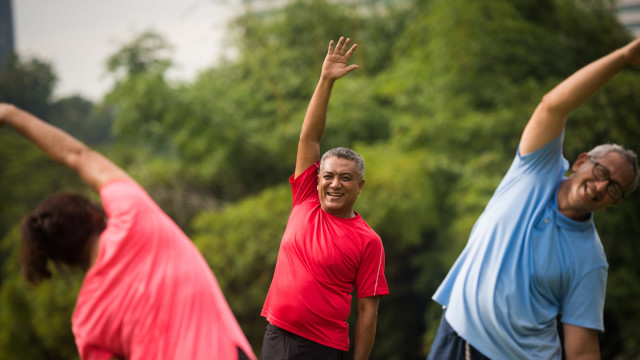Yoga: Relaxation, Fitness, or Both?

Broadly speaking, yoga sceptics can be divided into two camps: those who deem it a Bali-inspired, middle-class cop out for real exercise, and those who fear its difficulty in areas such as balance, stretching, and flexibility. The first camp views yoga as relaxation posing as fitness; the second, as fitness posing as relaxation.
The truth is that yoga is both: and it’s this combination of fitness and relaxation — this synergy between exercise and rest — that make it not only a wonderful activity, but also one whose benefits extend far beyond the physical. Yoga touches us emotionally; it fosters a sense of community; and, in some cases, it brings us spiritual enlightenment.
But for today, I want to pause and focus on the effect yoga has on our bodies, specifically. This is because my own yoga journey so far has been primarily physical, informed in particular by Leslie Kaminoff’s The Anatomy of Yoga (2007). Kaminoff is an experienced yoga teacher, inspired by the tradition of T.K.V. Desikachar. He currently leads "The Breathing Project," a non-profit focused on sharing the ideas of breath-centered yoga with the world.
His book allowed me to learn exactly how each yoga pose works from an anatomical perspective. You may know that a downward dog stretches your calf muscles, but what else? This knowledge is particularly vital when working with injuries. I recommend the book to everyone who wishes to learn more about the inner workings of yoga, or still remains unconvinced about the ways in which it can help your body as well as your mind.
“The reason for this mutually illuminating relationship between yoga and anatomy is simple: the deepest principles of yoga are based on a subtle and profound appreciation of how the human system is constructed. The subject of yoga is the self, and the self is an attribute of a physical body,” writes Kaminoff.
In my own practice, I am able to achieve relaxation by using prana; in other words, vital energy. In the modern world, the burden of over-identifying with our physical bodies can be overwhelming. The practice of breathing in prana, the force that flows through our bodies, enables us to get into our “prana bodies”. Simply put, this experience allows you to focus inward; to stop and change your thoughts; to bring awareness into your every action. As Kaminoff noticed: “Prana refers to what nourishes a living thing, but it has also come to mean the action that brings the nourishment in.”
Still unconvinced? Let me present you with a scientific study. The very first randomized control trial of yoga’s benefits, published in 1975 in The Lancet, found that yoga was more effective than other relaxation techniques for reducing high blood pressure. This is not to suggest that your current relaxation techniques are invalid — whether that’s reading a book, watching TV, going for a run, or even something more leftfield, like writing poetry. But if you are willing to try it — or, indeed, already practice it — you will find that yoga comes with an added benefit: that of alleviating not just the outward manifestations of stress, but also what’s going on inside the body — like high blood pressure — that the naked eye cannot behold.
I invite you to embrace yoga as a physical experience: a movement of the body that enhances your Physical Wellbeing through flexibility, balance, and self-awareness. As we embrace 2022 as the year of Wholistic Wellbeing, welcome yoga into your life and relish in the joy it brings to the body.








